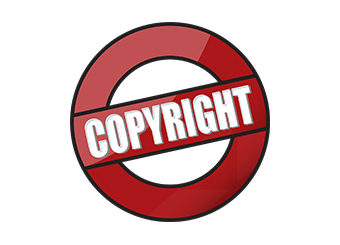Copyright Infringement: A Photograph Is Worth A Thousand Dollars

Each department at UTSA has its own website and is responsible for its own promotional material. When creating web and promotional content, we want to market the special attributes of our departments in a polished and professional manner. What better way is there than a photograph? According to the age-old adage, a picture is worth a thousand words. Well, in modern-day copyright circles, an infringement of another’s copyright is worth about a thousand dollars.
In the last ten years, companies have formed solely to scour the internet for unauthorized uses of copyrighted works. It is a booming business especially with the proliferation of social media platforms such as Facebook, Instagram and Tik Tok and the sharing, posting and re-posting of images without credits to the original author, graphic artist or photographer. Three companies in particular, Getty Images, Pixsy and Copypants, use algorithms to search the internet for their photographers’ works. When they find an unauthorized use, the companies send proof of the unauthorized use, threats of litigation and a demand for compensation of damages of $500 to $2,000 for loss of a license fee.
Most of the time, companies and institutions, such as UTSA, are not even aware that the unlicensed image is displayed on their website. Unfortunately, this is no defense to copyright infringement. Copyright infringement is “strict liability,” meaning neither knowledge nor negligence need to be proven to establish an infringement. Still, there are defenses available to UTSA. The first is the “fair use” defense. Section 107 of the Copyright Act provides the statutory framework for determining whether something is a fair use and identifies certain types of uses—such as criticism, comment, news reporting, teaching, scholarship, and research—as examples of activities that may qualify as fair use. Notwithstanding, just because UTSA is an educational agency and research institution does not mean that our use is automatically a fair use. A court will look to four factors in evaluating whether the use was fair:
- Purpose and character of the use, including whether the use is of a commercial nature or is for a nonprofit educational purpose;
- Nature of the copyrighted work;
- Amount and substantiality of the portion used in relation to the copyrighted work as a whole; and
- Effect of the use upon the potential market for or value of the copyrighted work.
A court’s evaluation of “fair use” claims are on a case-by-case basis that is specific to the facts of the case. This means there is no formula for a pre-determined fair or unfair use outcome.
Another defense is “sovereign immunity,” which is a legal doctrine derived from British common law that the King could do no wrong. Historically, in the United States, courts have held that the provisions of the Copyright Act did not subject states (the sovereign) to liability for copyright infringement. However, on March 23, 2020, the Supreme Court opened the door to state liability if there is evidence in the legislative record that states have intentionally infringed copyrights and have not provided adequate remedies for affected copyright owners under state law. On June 3, 2020, the U.S. Copyright Office issued a Federal Register notice seeking public input on this issue, which ended on October 22, 2020. In the near future, the Copyright Office will schedule roundtables to discuss the issue further.
If your department uses an image protected by copyright, your department may be responsible for paying the license fee or settlement of any claim of copyright infringement. To reduce your department’s liability from copyright infringement claims, we recommend that you use images from Adobe Creative Cloud, which is free for UTSA faculty, staff and students when using your UTSA-issued email address and credentials by signing on at: https://odl.utsa.edu/digital-tools/content-creation/adobe-creative-cloud/ and be sure to select “Sign in with an Enterprise ID”. We caution against supposedly “free license” images on websites such as StockSnap, Unsplash, Pixabay, etc. because those images require strict compliance with the terms of the “free license” such as credit display, type of use and length of use that can change at any time, thereby making you a copyright infringer. Remember the other age-old adage, nothing in life is really free.
In conclusion, when creating UTSA promotional materials and websites, we must choose images that not only represent our educational aspirations and endeavors but also respect the copyright of the creator of the photographs and graphics.